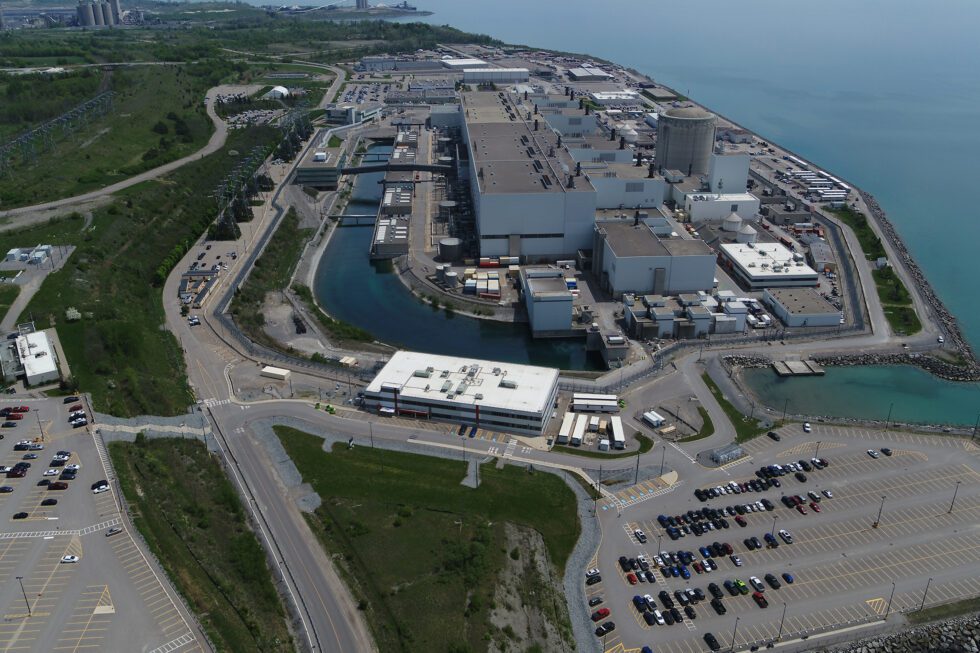Learn about Ontario Power Generation (OPG)’s plans for the decommissioning of its nuclear material storage facilities and the role played by regulatory and oversight bodies in ensuring our plans are safe, sustainable, and fully funded.
Carefully planned from the start
A nuclear power plant produces reliable, low-cost, and carbon-free energy for decades. But eventually, a plant will reach the end of its useful life and need to be decommissioned. The same is true for related sites, such as OPG’s Nuclear Sustainability Services’ waste management facilities. OPG has been planning for this eventuality – and setting aside funds – since day one.
Planning for tomorrow
The safe decommissioning of nuclear sites is fully funded.
$11.7 billion
OPG fair value of Used Fuel Segregated Fund (Sept. 2022)
$8.8 billion
OPG fair value of Decommissioning Segregated Fund (Sept. 2022)
12
megatonnes of GHG emissions avoided by OPG’s reactors per year, equal to 3.6 million cars.
Dedicated funds for nuclear waste management
We firmly believe the cost of decommissioning our storage facilities should not fall to future generations, so that’s why we created the “Nuclear Funds” which include:
- A Used Fuel Segregated Fund, covering costs associated with the long-term management of used nuclear fuel bundles.
- A Decommissioning Segregated Fund, to cover costs for nuclear fixed asset removal and the processing and long-term storage of low-and-intermediate level waste.
These funds remain in third party custodial accounts, segregated from the rest of OPG’s assets.
Decommissioning deconstructed
Decommissioning is the process of decontaminating and dismantling sites and facilities, because they have reached the end of their operational lives.
OPG’s planning assumption for the decommissioning of its nuclear generating stations is a deferred dismantlement strategy. This is an approach used internationally and in Canada. Under this strategy, the station will be defueled and dewatered immediately after it has ceased operations and prepared for a 30-year period of safe storage and monitoring. After this period, the station will be dismantled and the site will be made available for reuse. Overall, the decommissioning and dismantling process involves:
- Removing fuel and heavy water from reactors and placing equipment in a safe, caretaking state.
- Monitoring the facility for approximately 30 years as radiation levels decline.
- Moving used fuel from the wet storage bays to Dry Storage Containers (DSCs).
- Monitoring of used fuel in temporary storage, by OPG and the International Atomic Energy Agency (IAEA), until it’s safely transferred to a long-term repository.
- After the safe storage period, specialists remove all radioactive material and dismantle the facility.
- Remaining structures are then demolished, and the site is made available for OPG's reuse.
OPG has a process in place to review the decommissioning strategy assumption, considering factors such as industry trends, technological advances, and public, community, and stakeholder expectations.
Research and international cooperation
Scientists around the world are engaged in the search for safe management techniques and disposal of nuclear waste and have committed billions of dollars in research.
OPG belongs to several international organizations concerned with the handling of nuclear waste, and has cooperative agreements with many countries that are at the forefront of research and development.
These international links facilitate the exchange of technical information, joint research and development activities, and in some instances the exchange of technical staff.
Subscribe and stay informed
Sign up to receive the latest news, project updates, and event information from OPG.
